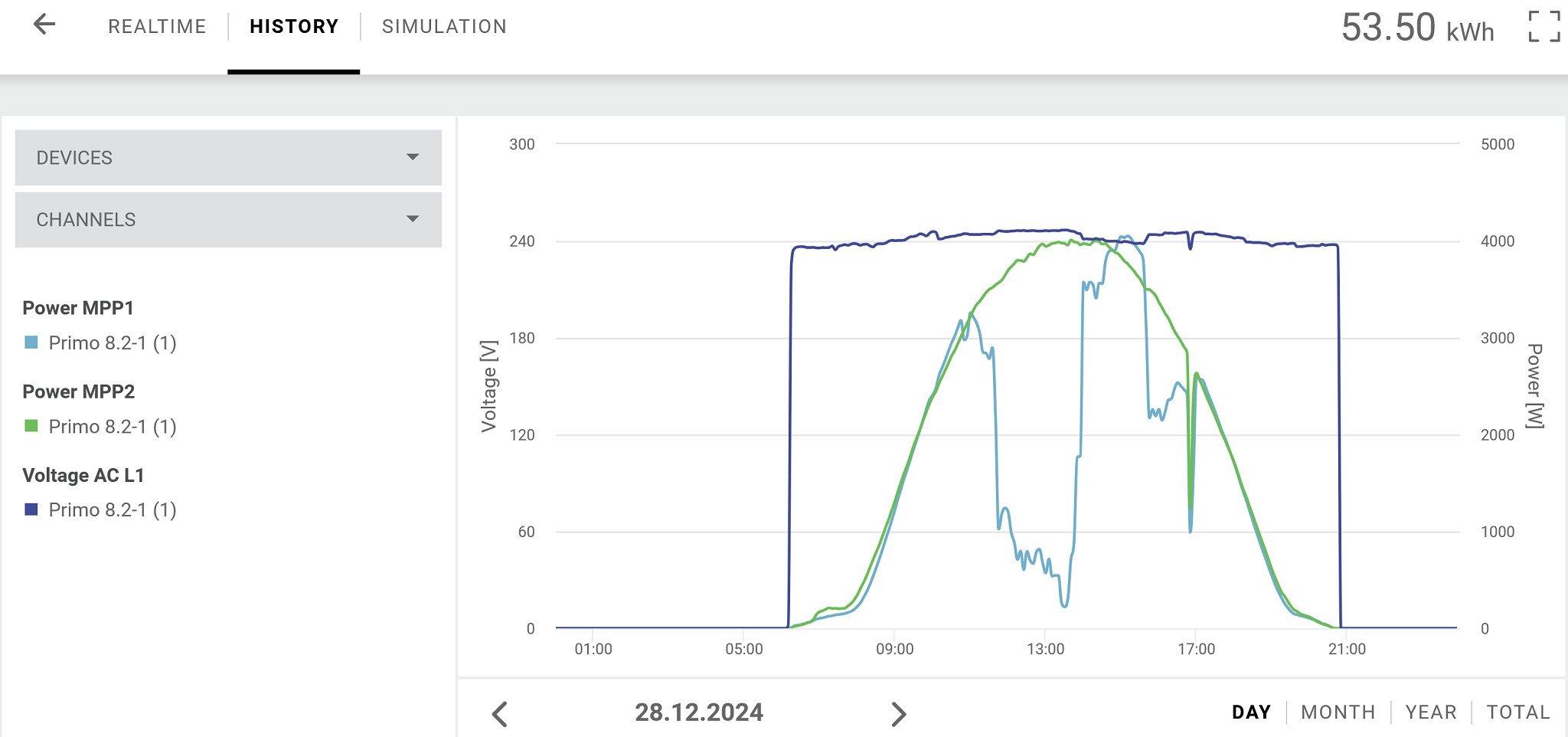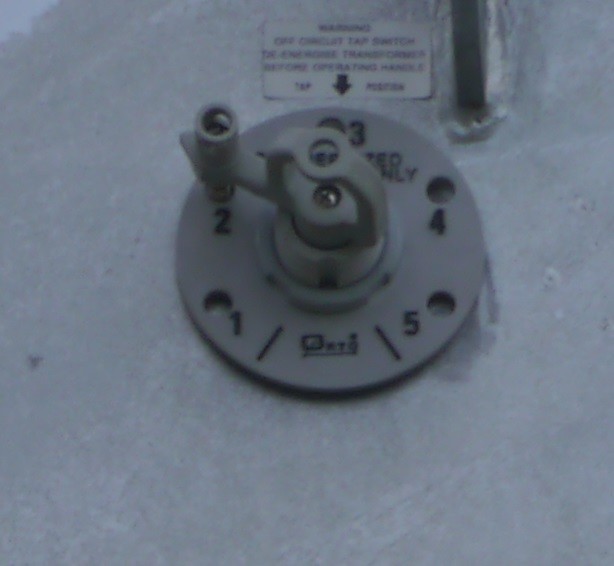Jase2985:I'd put money on it being related to grid voltage being too high. The relationship with it worsening on weekends and/or holidays will be due to commercial use being lower maybe as well as domestic use increasing slightly. If your local network has other solar customers on it the increased export by them, and you, will also be increasing grid voltages. Your own consumption (displacing export) will also serve to lower your local grid voltage as I observe when we plug in our EVSE at peak generation times.
dantheperson:
Have you been checking mains voltage levels? I got the email this morning saying the inverter restarted yesterday afternoon due to high voltages. Output would have been curtailed long before it got to the point of restarting. I'm starting to grow a hunch that voltage management is worse on weekends and holidays.
for me its defiantly related to what others are doing, if they are at home there seems to be more AC and other usage which lowers the grid voltage.
Vector is running our area at the higher end of the acceptable voltage range. which when a few people are generating power via solar it pushes the grid voltage up even more into that area where the inverter starts to curtail generation to compensate and not contribute to the issue anymore.
The underlying problem is that the lines companies' grid infrastructure is pretty crude and archaic so in order to provide their customers who are furthest from the transformer/voltage regulators an acceptable grid voltage after transmission resistance voltage drop they just crank up the supplied voltage at the source, and bad luck for us solar owning customers who suffer the consequences we're seeing here.
We had an interesting conversation with our neighbour a couple of days back. She works for Powerco and is aware of the excess voltage issue we are having so has been asking a few questions at her work. It seems the transformer and voltage regulator that were installed down the road from us a few months back was intended to address low voltage issues for some more remote customers. Bingo, that was when our current problems started! Now to get Powerco to analyze the data from the voltage logger they have in place and work out how they can provide an acceptable grid voltage to us.
@LightbulbNeil, If your 15kW 3 phase Fronius runs the same Solarweb monitoring package as our 8.2 Primo Fronius then go into the Analysis option, then History, then go to the Devices and tick both the Meter and inverter boxes. Then go into the Channels and tick the Power MPP1 & MPP2, plus as many other arrays the inverter has incoming and tick the Voltage AC L1 (and possibly other options to see all your phases). Then click Okay.
You should see something like this now (perhaps with more lines for more arrays and phases):

Note the grid voltage was in excess of 246V at 13:00 but dropped to ~241V when I plugged our Polestar in to charge for a couple of hours. Also the 5kW phase export cap is ensured by dropping current from MPP1 array and this was occurring either side of the EV charging but the excess grid voltage is causing the inverter to struggle to export even 4.5kW, as well as restricting total generation. The way our installer describes the situation at play is that the inverter sees excessive grid voltage and decreases its output to avoid worsening the situation. This de-rating occurs when the grid exceeds 243V (as our nominal voltage is supposed to be 230V +/- 6%, so 243.8V maximum. Beyond that voltage the inverter restricts output with a hard limit being set at 249V when it will shut down until the grid voltage stabilises closer to 'normal'. We are seeing reductions of around 10% in our export and generation levels compared to this time last year. Last summer we saw generation sitting at 8.2kW for a few hours over the middle of the day but now struggle to make 7.7kW, despite 9.5kW of panels feeding the inverter.
These parameters are in line with standard AS/NZS 4777.2:2020 so long as your installer has put these in place. The problem, at least in our case is that our grid voltage is looking for like 240V being nominal but the inverter must legally be set to 230V. From comments from earlier posts it seem at least one lines company is still working to AS/NZS 4777.2:2015 which has wider parameters so it really is the 'wild west' out there as far as lines companies' behaviour is concerned. Also there is a ray of hope on the horizon as standard AS/NZS 4777.2:2024 which comes into force in a couple of months allows for 230V +/-10% setting on inverters which will solve our problems at least for a while, until solar uptake increases further which is likely to impact on grid voltages.
Also the cooling issues you have had may be linked to excessive grid voltages I'm guessing. I know when I'm near the inverter and watching the output yo-yo due to grid conditions it does seem that the cooling fan is putting in plenty of effort so the inverter seems to be working hard to cope with the situation.


